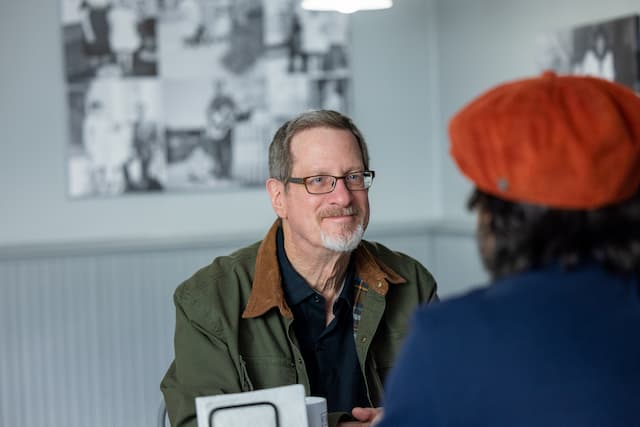PODCAST: HELPING COUPLES HEAL FROM INFIDELITY — Linda J. MacDonald
A Presentation I gave for Pierce County Counselors Association. While geared for professionals, general audiences may appreciate as well.
Outline for Presentation on HOW TO HELP COUPLES RECOVER FROM INFIDELITY
Introduction: Affairs: Symptom Model or Addiction Model?
My GOALS for this seminar:
–Grasp the idea that No One “Deserves” an Affair
–Gain new insights so you won’t be “fooled” by an unfaithful partner
–Increased ability to understand and normalize the intensely hurtful, traumatizing, dehumanizing experience of the betrayed spouse.
–Ways to instill hope in couples looking for repair, rebuilding and recovery from affairs
–Tools for helping couples rebuild TRUST
–More therapists equipped
I. COMMON MISTAKES BY THERAPISTS:
A. The “romance” trap for therapists.
B. The “rescue” trap
C. Some counselors do outrageous things
D. The first session is CRITICAL
E. Allowing Self to Be Manipulated by Betrayer
F. Person-centered therapy has its limits.
G. Affairs as “Symptom” Model – An affair is merely a symptom of the trouble in the marriage.
· Assumes if you do marital therapy, the lover and the problems associated with the affair will “go away.”
· This model does not account for the chemical changes in the brain
· Symptom Model fools therapists into buying the straying person’s long-pondered “reasons” the affair “happened.”
· Many therapists are unaware of how a straying spouse is deluded by the emotional distortion of the affair.
· Because of this, REWRITES the MARITAL history.
· When we are fooled by a straying person’s distorted lens, we inadvertently take the straying person’s rationalizations at face value.
· Often the betrayer in marital therapy continues on with the lover, or uses what the therapist says to justify leaving the spouse.
· The Symptom Model makes injured spouse feel blamed for betrayer’s infidelity.
· The Symptom Model reinforces societal myths:
· It supports the notion that one person can “Affair-proof” his/her marriage.
· It is more merciful to divorce a spouse when in a truly miserable marriage than to use an affair to exit the relationship.
· We need to take into account that the betrayed spouse is a traumatized spouse.
H. The Misapplication of Normally Useful Systemic Theory:
Concept of Linear thinking vs. Circularity
A + B = F
Linear — Cause/Effect
Linear paradigm
A → B → D
Example of Cause/Effect:
Assault → victim → injury
Views one person as the perpetrator (the “bad person,” “cause”) and the other as the victim (“good person,” receiver) which leads to something “Bad” or “dysfunctional” = F
Circular Thinking/Paradigm used in Systems Theory:
Behavior A invites Behavior B which invites Behavior C which invites Behavior A and so on.
Each person’s behavior invites the behavior of the other
Systems trained therapists use this to trust they can effect change at any location on the circle O
Examples of Circularity Paradigm in Couple Dynamics:
—Pursuer/Distancer
—Overfunctioning / Underfunctioning
—Passive / Aggressive
—Addict/Enabler or Co-dependent.
Keep in mind:
• An affair can be a symptom of any number of things (page 49 in Linda’s book, How to Help Your Spouse Heal from Your Affair):
• While a troubled marriage may make a person more vulnerable to an affair the betrayed spouse did not MAKE the involved partner become entangled in an outside relationship.
• Not all persons in troubled marriages choose to act-out through an affair. They had other options.
Another Systems Concept – Trianglulation – instability of a two-legged stool finds a third leg (outside person or activity) to “stabilize”.
Now let’s consider how to integrate Systems Theory with the Addiction Model:
I. Affairs as Addiction Model
Most of us know you can’t do effective marital therapy as long as an outside chemical is impacting at least one person in the system.
The usual circular dynamics + an outside chemical impacts original marriage in extra ways
EXAMPLES: Chemical Dependency, Domestic Violence, Mental Illness, Affairs.
Alcohol, drugs, affairs create changes in brain which create a life of their own
Yet, even systems trained therapists who generally feel more effective if they can treat the client in the context of their relationship(s), realize that couples’ therapy may be ineffective or premature in the following cases:
Examples of Therapeutic Needs to Address before you can do effective Marital Therapy:
• Domestic Violence
Need to work on Anger Management and address deeper issues – to be rid of all rationalizations/cognitive distortions that justify hitting or overpowering others with physical force
• Substance Abuse/Chemical Dependency
Requires Inpatient or Outpatient Chemical Dependency Treatment, and the addict to be committed to post-treatment recovery program, before you can work on the marital issues
• Significant Mental Illness such as: Schizophrenia, Bipolar I Disorder, etc.
Medication must be managed properly before you can effectively work with them as a couple
- Sex addiction – Person needs to see a Certified Sex Addictions Therapist (CSAT), Good idea for spouse to attend a “partners” group (Betrayal and Beyond, Prodigals, Celebrate Recovery)
- Gambling addiction – Person needs to join a Gamblers Anonymous Group and committed to 12 step program; spouse to attend Al-Anon group
- Criminal Behavior – Person needs to settle score with the law, not blame spouse or the marriage for illegal actions
The problem behavior/imbalance must be addressed first, before we as therapists can do effective or sometimes even ethical couples’ work.
J. Example of Chemical Dependency
—The Addiction develops a life of its own:
1. Chasing the first high, seeking relief, numbing emotional pain
2. Self-consumed
3. Violates rights of others, entitled
4. Maltreats loved ones
5. Steals from loved ones
6. Angry when deprived of substance
7. Lying, deceit
8. Blame-shifting
9. Denial
10. Compulsive component
11. Unsafe for family
K. Now apply to Affairs: Neuroscience & how the affair develops a life of its own
–When the hormones go up, the IQ goes down. The Neurobiology of forbidden romance/sex: increased dopamine, adrenalin, phenylethalamine, etc.
Similar to effect of morphine on the brain:
1. Chasing the “high”
2. Self-consumed
3. Violates the rights of others
4. Maltreat loved ones
5. Steal – use family $ to support “habit”,
6. Anger when deprived
7. Lying, deceit, secrecy
8. Blame-shifting
9. Denial – emotional distortion
Add: Midlife crisis = a convergence of fear of aging + other factors
-Betrayer MUST give up Lover (substance) before can even think about marital therapy. You can work with spouse/family to lead up to an intervention.
—MYTH: If we do good marital therapy and the couple re-connects in a healthier way, magically the relationship with the Lover will fall away → no more need for substance (i.e. third party).
**It doesn’t work that way with Domestic Violence, Substance Abuse, or Mental Illness. Why do we think it will work with Affairs?????
L. Like with any reward-producing drug, the Affair develops a life of its own:
i. Bubble of the Affair
ii. Creates an Emotional High that can’t be duplicated in any other setting
iii. Causes Unfaithful person to Rewrite the Marital History
iv. Cognitive dissonance → rationalization → distorted lens →new reality
This often leads to betrayer becoming detached → cold → heartless → contemptuous toward spouse.]
This dynamic explains the “Alien Syndrome” – spouse looks like partner on the outside, but it seems like an “alien” is residing on the inside
II. HOW TO HELP THE INJURED PARTNER
A. Empower the Injured Spouse. Express anger, hurt, grieve, permission to be indignant, draw boundaries
B. Normalize the Trauma experienced by the Betrayed Spouse not “crazy”
Reactions of betrayed spouse resemble post-traumatic stress symptoms. Loss of innocence, shattered assumptions lead to: obsessively pondering, continuously watching, physiological hyper-arousal, flashbacks, and intrusive images. (AAMFT brochure on Infidelity by Dr. Glass)
“The private calamity of discovering that your partner has become someone you don’t recognize and has lied to you as if you were an enemy blows your secure world to pieces. You no longer trust your eyes to see, your brain to comprehend, or your heart to feel what is true.”
(Dr. Shirley Glass, Not “Just Friends”, p. 67)
“It’s like being married to a four-star general and finding out that he’s really a Russian spy.” (Glass, p. 96)
Chart on Categories of Trauma & List of Symptoms of PTSD – Handout
-Triggers
-Hypervigilance
“Hypervigilance is one of the most common manifestations of hyperarousal in traumatized individuals. Hypervigilance is an appropriate reaction to loss of safety. Watching for signs of further danger is an important survival technique.” (Glass, p. 150)
If we don’t “get” the betrayed spouse’s pain, we can’t help the betrayer “get” the damage that needs repair.
C. As a therapist, you need to understand the unique SHAME each partner is dealing with.
o Injured spouse – takes as a personal reflection on self.
o Betrayer – knows not respected by friends, relatives who find out
The straying person especially feels shame when he/she wakes up from the fog.
III. It is important to Instill hope in new clients seeking help for marital repair
o Broken Bone analogy
o Examples of famous couples who are still together
—Only way I can tell if there is “no hope” is if I detect hard-heartedness in Betrayer
—Overwhelming shame and perfectionism on part of the Betrayed
—Need the “buy in” on the part of both partners
—Mix it up, a little – some individual sessions/some together
IV. Identify the 7 key components of rebuilding trust
1. Betrayer accepts full responsibility
2. Betrayer comes completely clean, a.s.a.p.
3. All contact with OP cut off/ walled off as far as possible
4. Explore factors in betrayer’s life that contributed to path to affair.
5. Hyper-accountability
6. Help betrayer to learn to anticipate triggers and respond to them with validation and soothing
7. Teach skill of “checking-in”
V. Gain skills in helping straying partners accept their roles as healers
A. How to be on both sides at once
B. Normalizing the wide swing of emotions — emotional roller coaster
C. Trauma reactions to betrayal = normal reaction to an abnormal experience
D. Identifying feelings of betrayal in their own past
E. Make connections in session between FOO patterns and current issues
F. Help injured spouse be REALISTIC
G. Teach them both the skills of how to offer a meaningful apology, and to not demand instant forgiveness
H. Use visual exercises to work through gradual “letting go” of anger, resentment
VI. Learn ways to facilitate reparative interactions in session
A. The critical need for humility on both sides, and what that looks like
B. Establish emotional safety – teach the rules of fair fighting
C. Speaker/Listener – reflective listening, who has the floor?
D. Talk about Feelings – expand feeling-word vocabulary
E. Therapist as facilitator vs. interpreter
F. Carefully distinguish between “causing” the affair and “contributing to vulnerability” to spousal affair
G. The benefits of co-therapy
H. Trauma work with the injured spouse – beyond talk therapy, such as:
-EMDR,
-Any visual, right-side of the brain exercises
-Lifespan Integration, advanced, for Trauma – proves to the body that the trauma is no longer happening
– Healing Timeline or inner healing prayer – My Story
VII. Other Effective Interventions:
· Story of St. Peter and gates of Hell and Heaven – for both
· Argument between the North wind and the Sun
· Invalidation – step on person’s foot/toe
· Victim or Victorious?
· Water-skiing – boat can’t do all the work. We have to cooperate
VIII. Know about other helpful resources
A. Support groups – Celebrate Recovery, SA, BAN, Prodigals International, Pure Desire
B. Books – with comments
C. Help for sex addiction — it’s own specialty. CSAT = Certified Sex Addictions Therapist – Trained through iitap – Patrick Carnes’ program – website where you can find local CSAT therapists- http://www.iitap.com/
X. Time for Questions and Answers





